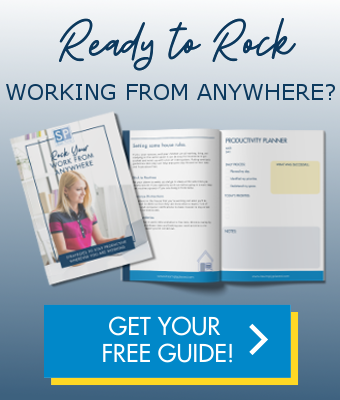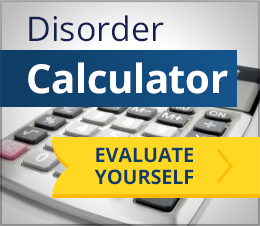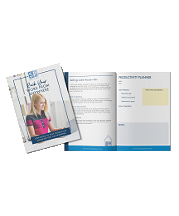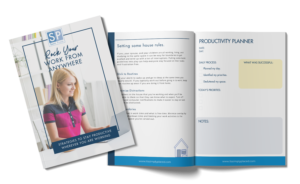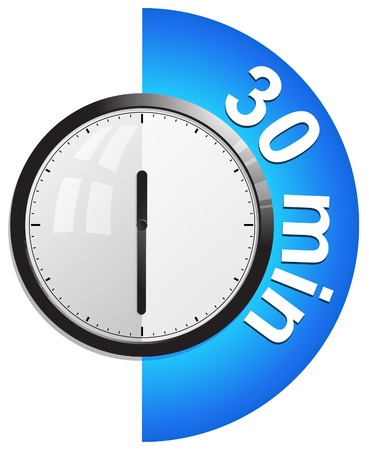
Confucius said “Life is really simple, but we insist on making it complicated.” And so it is with our homes. When you first moved into your house or apartment, it wasn’t cluttered, but years of occupation, kids and our busy lives lead to the accumulation of stuff. Sometimes this may be curated “stuff” like a collection of something artsy or interesting, but more often what we subconsciously and unintentionally build up is junk, duplicate items, broken things and stuff we don’t need, stuff that doesn’t fit or stuff that we thought we would use (or used to use), but never will.
Facing up to a massive decluttering mission can be daunting and one you put off time and again because no one wants to sacrifice the time to sort through their stuff. Instead, why not approach it in manageable slices? If you can take a 30 minute window out of your day whenever you can spare it to conduct a mini declutter session, you can make a significant dent in your disorder without turning it into an exhausting affair. Schedule these a couple times a week to ensure consistent progress.
Here are the top seven places in your home where a 30 minute declutter mini-mission will have the highest impact:
#1 Under Your Sink

Once the trash is gone, you can see what’s left. If you’re like most people, you buy duplicates because you don’t know what you have. Hit the dollar store and grab some small bins and sort the stuff you have left. Label the bins. Nail polish in one, makeup in another, soaps in another, bath gear in another. You get the idea. That way you can find what you need and won’t buy duplicates once you can see what you have.
#2 In Your Desk Drawers
Your desk (if it’s like most) can be a black hole of paperwork, spare change, dead batteries and more. Pull up a chair and a trashcan and get busy. Recycle or shred bills that are paid and older than three months unless you need them for tax purposes. Grab a jar and toss in all your spare change so you can turn it in at the bank or the change machine at the store. Toss the batteries out. Don’t get granular. Keep what you need, toss what you don’t, but don’t get immersed into developing a new filing system for now.
To help your declutter efforts (and avoid future clutter), do a quick labeling of drawers or add in some bins and dividers. That way when papers or supplies come in that you need or want to keep, you can sort them immediately into the proper drawer or bin so when you need something you can find it. Another avoid-the-clutter tip is to open your mail over your recycle bin rather than tossing it on your desk so you cull as you go and only keep what’s critical.
#3 Bookshelves

Some you will want to keep – coffee table books, yearbooks, picture books for the younger ones, select book you cherished, know you’ll re-read or want to pass on to others, and any collectibles (you can’t throw out your full set of Harry Potter books after all). Do a quick organization by category or reader – kids, reference and collections. Then when more books come in, they can quickly be shelved to avoid clutter. If you prefer reading from an actual book than an e-reader, consider using the library so they end up on their shelves, not yours. If you buy books, donate them or give them away when you’re done.
#4 Hall Closet
The hall closet is intended to be a repository of guest jackets, umbrellas and galoshes. Instead, it’s a vortex of chaos. You open it, throw things in and slam it quickly before more stuff comes tumbling out. Grab a trash bag, a box and a couple of hampers. Toss what’s broken or beyond redemption. Box up items to donate that your family has outgrown or will never use. Use the hampers to sort items that need to be put away by each family member into their own room.
Now that the space is clutter free, take steps to avoid re-accumulation. Throw in a bin for shoes, hang coats up neatly and set aside an area for guest coats. Invest in some heavy duty Command Strip hooks for stuff like umbrellas that you need to be able to grab quickly. If you have a shelf up top, add some bins to keep your closet from becoming a landslide area and if you must toss things in (gloves, hats, scarves, etc), at least they will be confined.
#5 Laundry Room
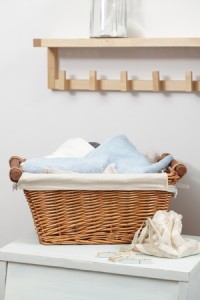
Once you’ve got the junk out, take these steps to prevent clutter. Consolidate any detergent bottles into one – funnel it in and toss the old. Get some bins so you can quickly organize by category. Sewing stuff in one, stuff to be repaired in another, safety pins and clips in another. You can also add a cardboard box for donations so you can toss outgrown stuff in after you launder it. When it’s full, donate, replace the box and repeat.
#6 Playroom or Rec Room
Whatever area your kids keep their toys can easily get out of hand. Depending on the age of your kids, how well you know them, and the relationship you have with them, you may or may not choose to involve them in an initial 30 minute declutter session. If they are old enough to understand that they are not using some of the things in the space, that they are lucky to have so much and others are less fortunate, and that if they declutter they can more easily find what they need when they need it, ask them to help you pull out items that they don’t use regularly to benefit someone that isn’t as lucky to have so much. They can also help toss trash and get rid of anything that doesn’t belong in this space.
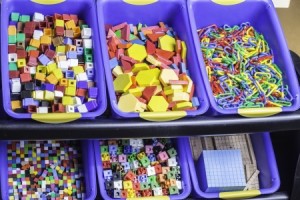
Bins are your best friend in any room, but critical in the play area. One for blocks, one for Barbies and so on. Clearly label them with nice large print cards so your little readers can find what they need (and hopefully) return them to the correct box when done. Use pictures as labels for pre-readers. Ask “Where does Barbie go?” and make a game of it to make decluttering child’s play (quite literally). Once the playroom is organized, if kids learn to only take out a few items at a time (“teaching them to put one item away before taking a fourth out, for example), this room can be maintained easily with a daily “ten minute tidy”.
#7 Garage
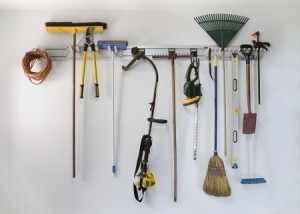
To keep your garage decluttered, invest in hooks to hang weed eaters, bikes and folding chairs. Utilize shelves with labeled bins host smaller stuff. Get larger bins for stuff that won’t fit on shelves. To tackle in ½ hour increments, focus on one category. Buy a bin or bins for sports stuff, for example, then run through the garage and gather all bats, balls, fishing rods and catcher’s mitts. Next time, corral all your camping equipment in your 30 minutes. Before you know it, you’ll be clutter free and can actually park your car in there!
If you need more help getting your home free of the stuff you don’t need that makes life needlessly more complicated, consider the Declutter Clinic for a DIY program, or contact us for more information about our home organization services. We’d love to be a resource to you. Here’s to your simplified and organized life!

